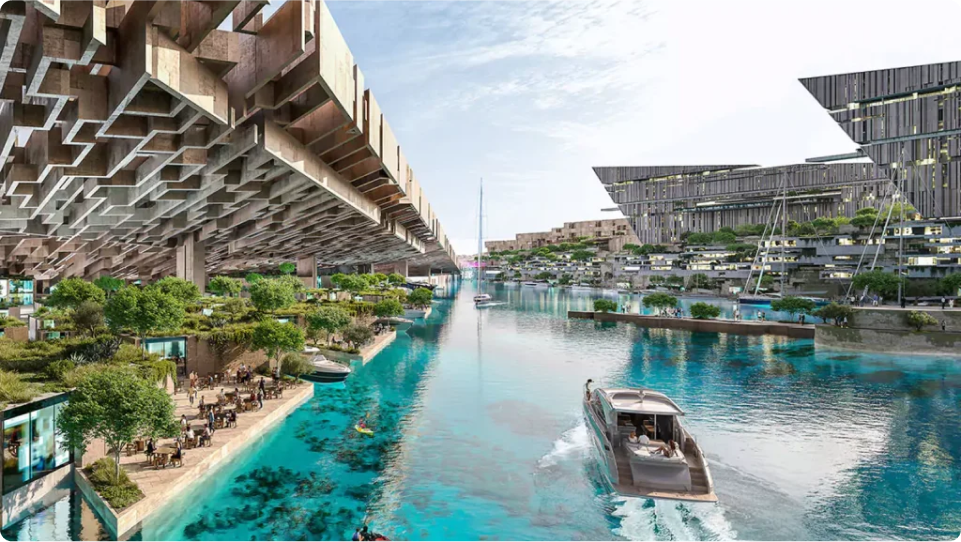The Building Block of Century-Long Structures in Saudi Arabia
Affiliated Research Center:
IRC for Construction and Building Materials.
Research team:
Dr. Muhammad Kalim ur Rahman (PM), Dr. Mesfer Al-Zahrani, Dr. Mohammed Al-Osta, Dr. Shamsad Ahmad

When two forces of innovation join efforts, the result is anything but ordinary. A research collaboration between NEOM and the Interdisciplinary Research Center for Construction and Building Materials (IRC-CBM) at KFUPM has resulted in a major breakthrough in construction materials. Using locally sourced dune sand and basaltic aggregates, the researchers team shaped ultra-high-performance concrete (UHPC) mixes designed to endure over a century in some of the world’s harshest environments.
More than two years of rigorous testing and simulation have led to these developments. Built with NEOM in mind, the ambitious Saudi giga-project redefining world destinations, this new material is both a remarkable achievement and a strategic enabler for sustainability.
Traditional concrete typically begins to show signs of deterioration early, especially in areas with high salinity, humidity, or temperature fluctuation. NEOM’s ambition was to create a concrete that could last for 120 years in extreme conditions. As measured by SIMCO Technologies – Canada, KFUPM’s team of researchers successfully achieved this goal. Using the STADIUM software, whose particle packing density model brings physics and probability together, the team provided risk-informed service-life predictions. This packing method optimizes how materials fit together at a microscopic level. The researchers worked with particles of different sizes, adjusting the mix to fill every gap and eliminate weak points. After several trials, they arrived at a dense, compact, and remarkably strong concrete.
The final product achieves a compressive strength of more than 150 MPa, five times stronger than regular concrete. Its high resistance to both tension and bending (known as tensile and flexural strength) means it can support more load and sag without cracking. Just as important, this concrete has significantly reduced permeability, making it less vulnerable to water and chemical (particularly chloride) ingress that would normally wear it down over time.
Beyond its performance, the new concrete carries both an economic and environmental advantage. The proprietary non-commercial mix uses materials found in Saudi Arabia’s western region, where NEOM is taking shape. By sourcing these materials locally, sectors that rely on UHPC can reduce logistics costs significantly. The inclusion of industrial byproducts, such as silica fume and fly ash, further supports waste management efforts and helps lower the carbon footprint typically linked to high-strength concrete. In parallel, domestic steel fiber production, which reinforces the concrete, could lead to further cost reductions.
To achieve such a result, the project brought together experts in material science, structural engineering, sustainability, and advanced characterization techniques, proving once again that interdisciplinary collaboration unlocks solutions with broader utility. Already, the team is experimenting with various other innovations using UHPC, such as prefabricated modular housing units that are more compact, resilient, and long-lasting. This offers a glimpse into what’s possible when a material is designed with both purpose and place in mind.
United Nations SDGs
Through our commitment to sustainable development, this project aligns with the following United Nations Sustainable Development Goals (SDGs):

Industry, Innovation, and Infrastructure

Sustainable Cities and Communities

Climate Action